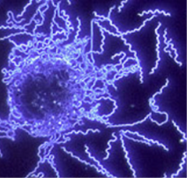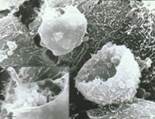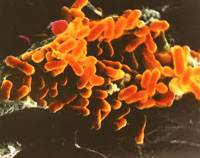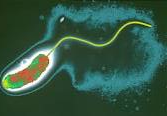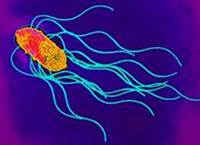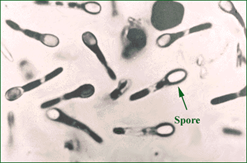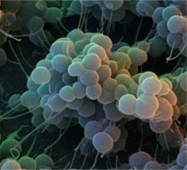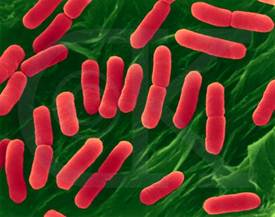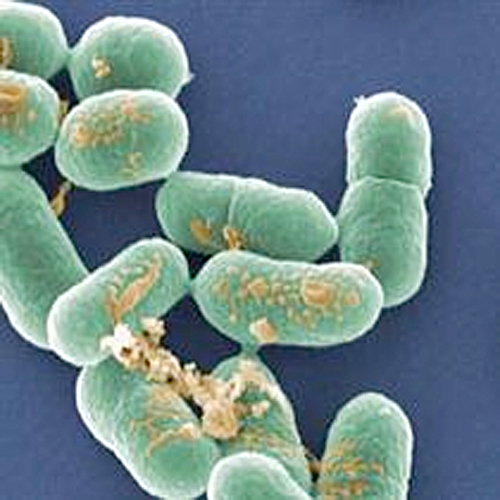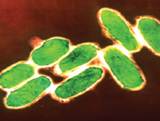Bacteria as Pathogens
While only about 5% of bacterial species are pathogenic, bacteria have historically been the cause of a disproportionate amount of human disease and death. There is good evidence that from the 1300s through the 1800s tuberculosis, bacterial pneumonia, typhus, plague, diphtheria, typhoid, cholera, dysentery were major causes of disease and premature death in Europe and the United States. Among those born in the United Kingdom in the 1800s, it is estimated that 70% died before the age of 25, and a large proportion of these deaths were due to bacterial infections. Not surprisingly, this burden of disease and early death fell most heavily on the poor. During the 19th century, however, there was the emergence of "the sanitary idea" in England and the United States, and the efforts to provide better waste disposal, clean water, better nutrition, and better working conditions were rewarded with remarkable reductions in disease and death rates.
Nevertheless, bacterial pathogens still pose a threat. The table below provides microscopic images of a variety of bacterial pathogens that are relevant to disease in humans. The hyperlinks provide additional information, primarily from CDC summaries.
Rogues Gallery of Bacterial Infectious Agents
|
|
|
|
Clostridium |
Staphylococcus |
|
|
|
|
|
|
|
|



